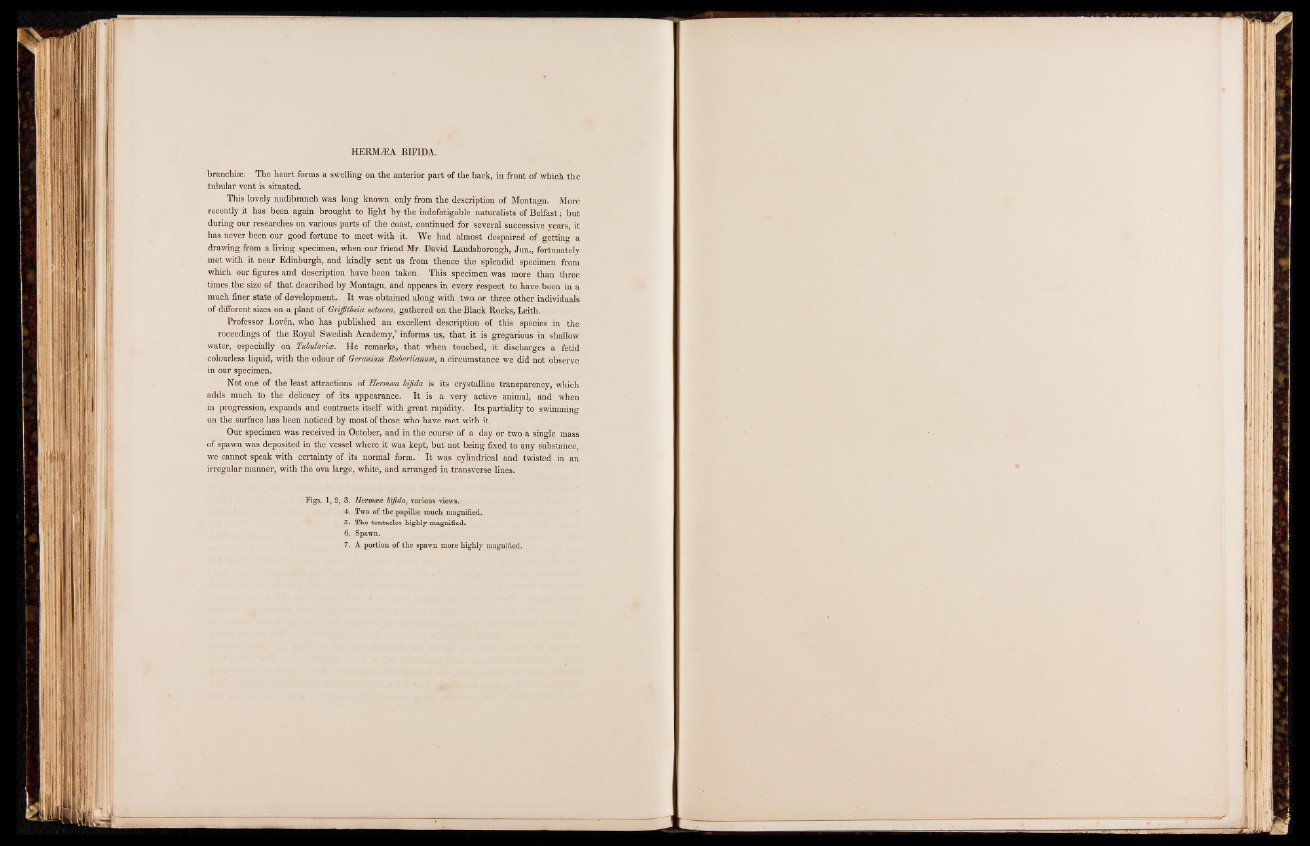
HERMiEA BIFIDA.
branchiae. The heart forms a swelling on the anterior part of the back, in front of which the
tubular vent is situated.
This lovely nudibranch was long known only from the description of Montagu. More
recently it has been again brought to light by the indefatigable naturalists of Belfast; but
during our researches on various parts of the coast, continued for several successive years, it
has never been our good fortune to meet with it. We had almost despaired of getting a
drawing from a living specimen, when our friend Mr. David Landsborough, Jun., fortunately
met with it near Edinburgh, and kindly sent us from thence the splendid specimen from
which our figures and description have been taken. This specimen was more than three
times the size of that described by Montagu, and appears in every respect to have been in a
much finer state of development. It was obtained along with two or three other individuals
of different sizes on a plant of Griffitlsia setacea, gathered on the Black Rocks, Leith.
Professor Loven, who has published an excellent description of this species in the
roceedings of the Royal Swedish Academy,’ informs us, that it is gregarious in shallow
water, especially on Tubularia. He remarks, that when touched, it discharges a fetid
colourless liquid, with the odour of Geranium Robertianum, a circumstance we did not observe
in our specimen.
Not one of the least attractions of Hermaa bifida is its crystalline transparency, which
adds much to the delicacy of its appearance. It is a very active animal, and when
in progression, expands and contracts itself with great rapidity. Its partiality to swimming
on the surface has been noticed by most of those who have met with it.
Our specimen was received in October, and in the course of a day or two a single mass
of spawn was deposited in the vessel where it was kept, but not being fixed to any substance,
we cannot speak with certainty of its normal form. It was cylindrical and twisted in an
irregular manner, with the ova large, white, and arranged in transverse lines.
Figs. K 2, 3.
4.
, 5.
6. 7.
Hemuna bifida, various views.
Two of the papillae much magnified.
The tentacles highly magnified.
Spawn.
A portion of the spawn more highly magnified.